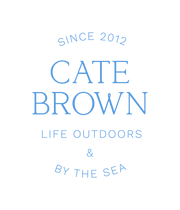Welcome to your new Photo Blog segment, Photographer's FAQ! Our first discussion: Cameras (specifically the ones I use)
So one of the biggest questions people ask me when they realize I'm a photographer and I use cameras is:
Canon or Nikon?!
As if this is actually a life or death question...
Well, I use Nikon, but not out of any serious disappointment with Canon. It's simply the camera I started using the most when I delved into digital photography in high school. I became most comfortable and familiar with it, and I found the button placement and menu navigation the most comprehensive for me. So it really came down to an ergonomics preference, and I'm still buying Nikon to this day.
Things may change in the future. There are plenty of photographers who, for one reason or another, switch their whole kit to another camera brand. But for now, I use Nikon.
You can explore the respected Ken Rockwell's discussion of Nikon Vs. Canon over on his website too.
So, what camera do you use?
I shoot with the Nikon D700 & D600 bodies. These were my first professional choices after the D80 I had been using. Both of these bodies are considered Nikon's semi-professional DSLRs (Digital Single Lens Reflex), meaning they have a lot of consumer qualities like smaller dimensions and weight, but a lot of professional qualities too such as overall image quality, settings capabilities and features. The highest professional line of Nikon cameras includes models like the D4, but I haven't quite hit that price point yet.
For those of you who are involved in camera-talk, the D700 is a sturdy full frame 12.1 megapixel camera, 5 framers per second, lowest ISO of 200 and max shutter speed of 1/64000th. It has since been replaced by the D800 and D600s, but I have no serious complaints about it! The D600 is a smaller and lighter body, with a full frame chip, 24 megapixel resolution, 5.5 fps, lowest ISO of 100 and max shutter speed of 1/4000th, and also incorporates video capabilities. One thing I love about the D600 that Nikon has recently incorporated (and that Canon has been doing for a while now) is "User" settings. You can preprogram desired settings such as focus mode, shooting mode, metering mode, manual settings... for different shooting conditions. For example, my U1 mode automatically sets my camera to my desired on the water sailing settings for bright sunlight and sports. My U2 mode is for my long exposures, seascapes, etc. One downside to this camera kit is the D700 takes CF cards and one kind of battery, while they D600 takes up to 2 SD cards and a different kind of battery, so accessories aren't interchangeable.
I also opted for these bodies because they simply are smaller, lighter, and pack a whole lot of resolution and great features into those compact bodies. Now, why not the brandy new D800 you ask? Well, I mostly don't have a current need for a 36.3 megapixel camera. Higher resolution means larger files that take longer to write to the card, longer to download, longer to go through, and take up more computer space. So 36 megapixels for an event where I end up with 1,000 shots by the end of the weekend? Not ideal. Perhaps in the future when it's time to upgrade my D700, but not yet.
More of Ken Rockwell's discussion on the D600 and D700, specs, features, how they handle and compare!
But after all this, everyone needs to remember that it isn't about the equipment! It's what you do with the tools available to you.
One of the other cameras I use is a $20 plastic Holga "toy" camera for some photographic fun on film. And I have exhibited beautiful work from that plastic toy!
You can have the biggest most expensive cameras in the world but if you see that piece of equipment as the end all instead of a tool to help your creative goals, then it's all for naught. It's the eye behind the camera that matters the most.
Satire graphics compliments of Shoppe Satire
Photographer's FAQ: Cameras


.jpg)
.jpg)
Leave a comment